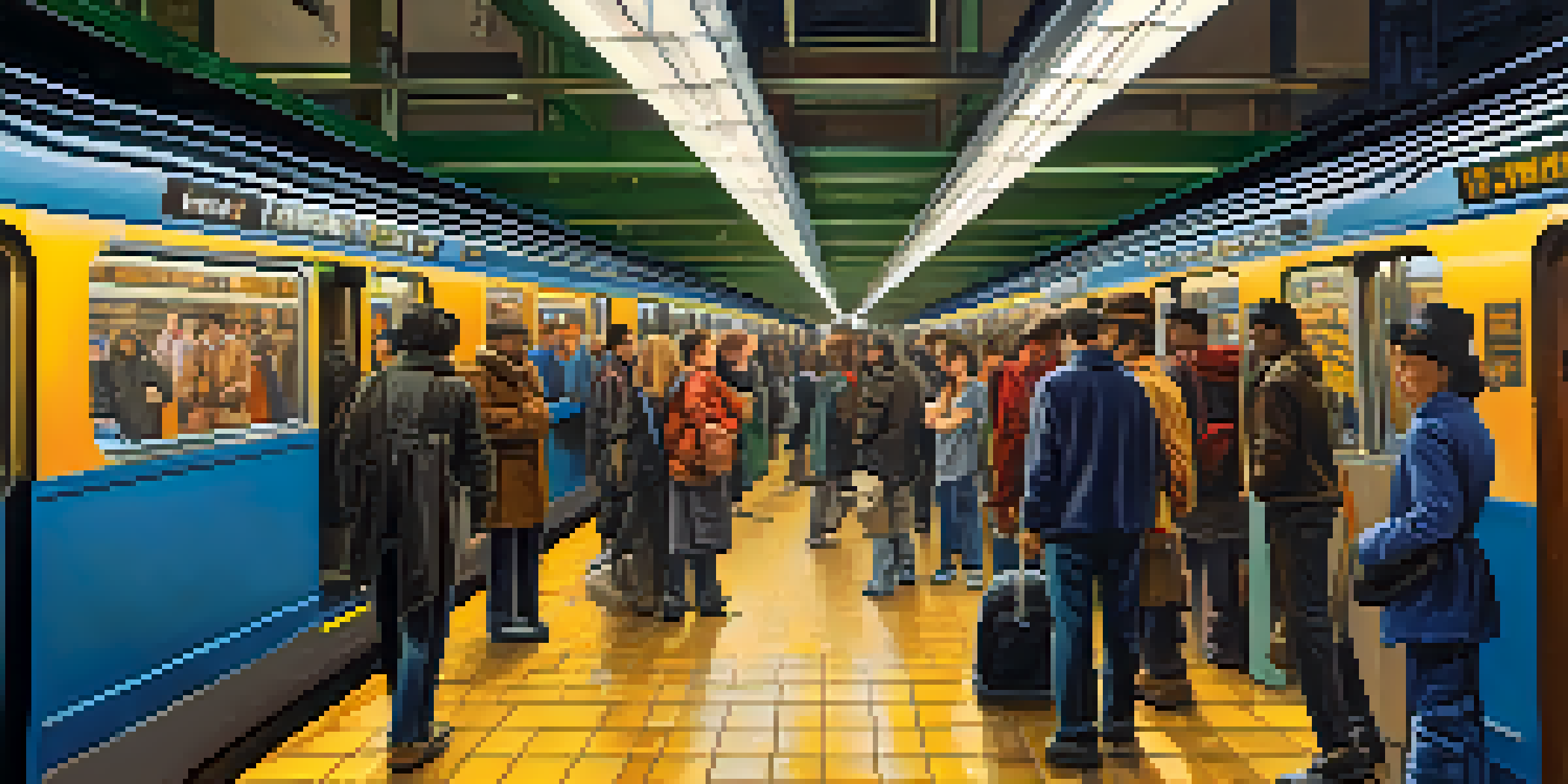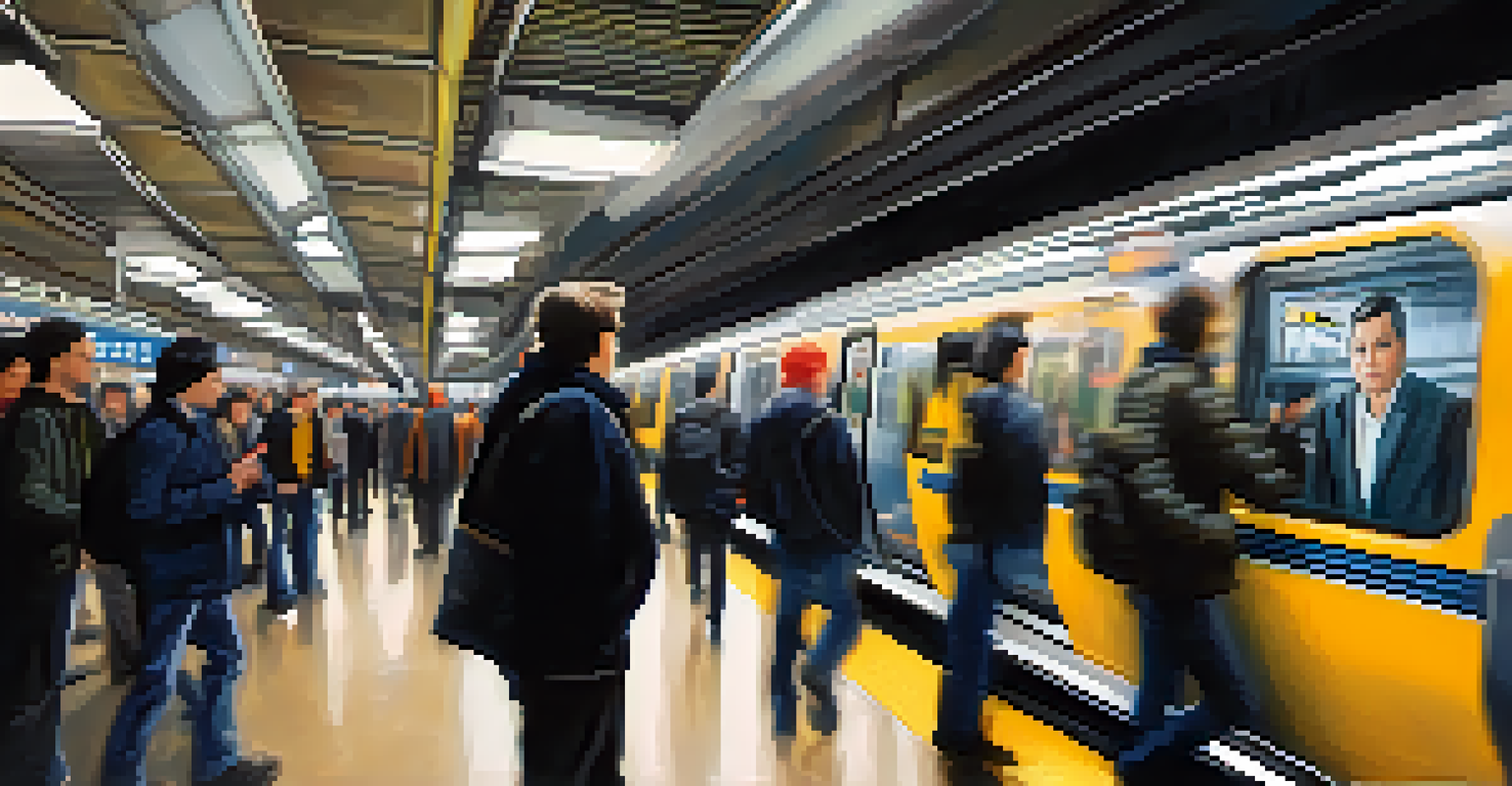Public Safety and Security Measures in NYC's Transit System

Overview of NYC's Transit System Security Landscape
New York City’s transit system is one of the largest and most complex in the world, serving millions of commuters daily. Given its scale, public safety and security are paramount to ensure the well-being of passengers. The Metropolitan Transportation Authority (MTA) collaborates with various agencies to create a comprehensive security framework.
Public safety is not just a matter of policing; it's a partnership between law enforcement and the community.
Transit security involves a range of measures, from surveillance cameras to police presence, all aimed at deterring crime. The focus is not only on crime prevention but also on enhancing the overall passenger experience. The sheer volume of daily riders necessitates constant vigilance and innovation in security practices.
Related Resource
In light of recent events and evolving threats, the MTA continuously assesses and upgrades its security protocols. Incorporating technology and community feedback plays a critical role in adapting to the changing landscape of urban safety. This proactive approach helps build public trust in the transit system.
Role of Surveillance Technology in Transit Safety
Surveillance technology is a cornerstone of NYC's transit security strategy. The MTA has installed thousands of cameras throughout subway stations and on buses, creating a network that monitors activities in real-time. This not only helps deter crime but also provides invaluable evidence in the event of an incident.

Additionally, advancements in video analytics allow for quicker responses to suspicious behavior. For instance, algorithms can detect unusual crowd movements and alert authorities promptly. This technology aims to create a safer environment for commuters and enhance the overall effectiveness of transit security.
Transit Security Framework in NYC
The MTA collaborates with various agencies to enhance public safety through a comprehensive security framework that includes surveillance and police presence.
However, the use of surveillance also raises privacy concerns. The MTA strives to balance security needs with individual privacy rights, ensuring that surveillance practices comply with legal standards and community expectations. Open dialogue with the public about these measures is essential for maintaining transparency.
Transit Police: Their Role and Impact
The presence of transit police is a vital element in maintaining public safety within NYC's transit system. These officers are specially trained to handle incidents specific to public transportation environments, ensuring a quick and effective response. Their visibility acts as a deterrent to potential criminal activities.
The best way to ensure safety on public transit is to empower the community to take an active role in their own protection.
Transit police engage with the community through outreach programs, fostering a sense of partnership between law enforcement and riders. This engagement helps build trust and encourages passengers to report suspicious activities without hesitation. The goal is to create a safe and welcoming atmosphere for everyone using the transit system.
Related Resource
In recent years, the transit police have also focused on mental health issues, providing assistance to those in need. By addressing these underlying problems, they contribute to overall safety and improve the quality of life for both passengers and staff in the transit system.
Emergency Preparedness and Response Plans
Emergency preparedness is crucial for any large transit system, and NYC is no exception. The MTA has established detailed response plans for a variety of scenarios, including natural disasters, terrorist threats, and medical emergencies. Regular drills and training exercises ensure that staff are well-prepared to handle crises efficiently.
Collaboration with local, state, and federal agencies enhances these preparedness efforts. By sharing resources and intelligence, the MTA can improve its response capabilities. This joint effort is essential in a city that faces unique challenges due to its size and complexity.
Community Engagement Boosts Safety
Programs like 'See Something, Say Something' empower commuters to actively participate in their safety, fostering a culture of vigilance within the transit system.
Public awareness campaigns also play a role in emergency preparedness. Informing commuters about safety protocols and how to respond in emergencies empowers them to act swiftly. A well-informed public can significantly enhance the overall safety of the transit system.
Community Engagement in Public Safety Initiatives
Community engagement is pivotal in enhancing public safety within NYC's transit system. The MTA actively seeks feedback from riders to understand their concerns and needs better. This open line of communication helps shape security measures that reflect the community's values and priorities.
Programs such as 'See Something, Say Something' encourage commuters to report suspicious activities, fostering a culture of vigilance. By empowering riders to take an active role in their safety, the MTA builds a stronger sense of community. This collaborative approach not only enhances security but also improves the overall commuting experience.
Related Resource
Moreover, community forums and outreach events provide opportunities for the MTA to educate the public about safety measures and resources available. Engaging with the community helps create a shared responsibility for transit safety, leading to a more secure environment for all riders.
The Impact of Health and Safety Measures Post-Pandemic
The COVID-19 pandemic brought about significant changes in public transit, necessitating new health and safety measures. The MTA implemented enhanced cleaning protocols and promoted the use of masks to ensure the safety of commuters. These measures aim to rebuild public confidence in the transit system as ridership begins to recover.
Air filtration improvements on trains and buses have also become a priority, helping to reduce the spread of airborne illnesses. By focusing on health measures, the MTA addresses new concerns that riders may have when using public transportation. This shift reflects the agency's commitment to adapting to the needs of the public.
Innovations Shape Future Security
The MTA is exploring advanced technologies, such as facial recognition, to improve transit security while balancing ethical concerns and public trust.
As NYC continues to navigate the post-pandemic landscape, the MTA remains dedicated to maintaining a safe environment. Ongoing evaluation of health protocols will be essential in sustaining public trust and encouraging the return of riders to the transit system.
Future Innovations in Transit Security
Looking ahead, NYC's transit system is poised to embrace innovative technologies to enhance security. Concepts such as facial recognition and advanced data analytics are being explored to improve threat detection and response times. These innovations could revolutionize the way security is managed in public transit.
However, the implementation of these technologies must be approached with caution, considering ethical implications and privacy concerns. The MTA aims to involve the community in discussions about new security measures to ensure transparency and accountability. Balancing innovation with public trust will be key to successful implementation.

The future of transit security in NYC will likely involve a blend of traditional methods and cutting-edge technology. By staying ahead of emerging threats and continuously evolving its approach, the MTA can create a safer environment for all commuters.